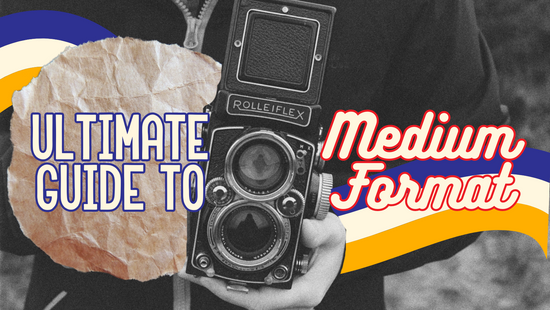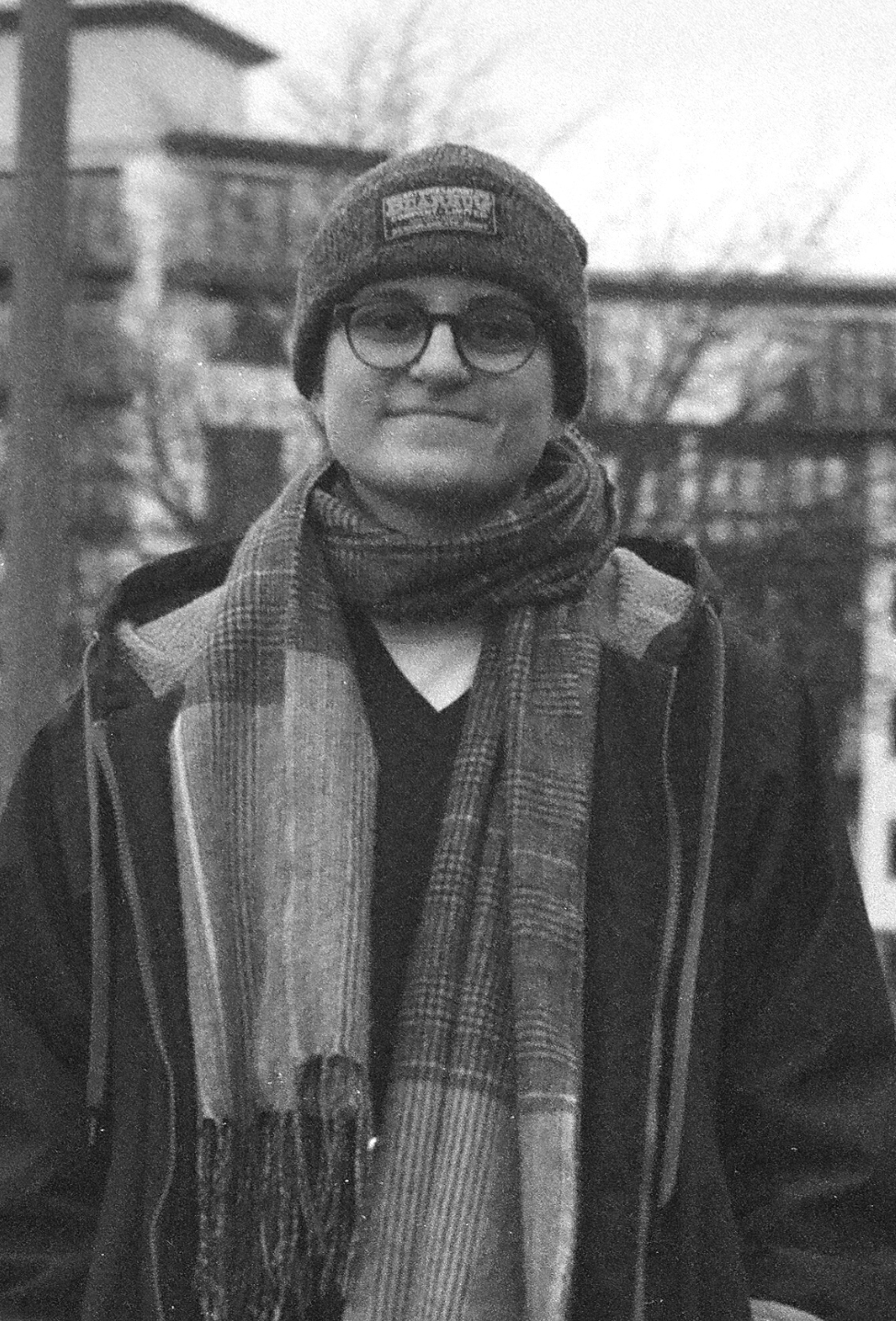Waist-level viewfinders… they’re all over Instagram, TikTok and other social media platforms. They look awesome! But how do you actually use one effectively?
You may have just looked through a waist-level viewfinder and thought “ahhhh, what is going on?! Everything is back to front!” I still do this. You may also be struggling to get your framing right, or you cannot tell whether you have got the subject in focus correctly.
Don't worry, we are here to help.

What are the benefits of using a waist-level viewfinder?
Social media may make these viewfinders seem like a fun addition to your camera, but there are also significant benefits to your photographic practice from using a waist-level viewfinder.
Here are some of our favourite reasons to use a waist-level viewfinder:
- A new perspective: photographing from waist-level takes the camera away from your eye and allows you to see subjects from a new angle.
- More discreet: people seem to immediately notice a photographer with a camera up to their eye. Waist-level viewfinders can be more discreet and disguised for street photography.
- Relaxed portraits: this is a psychological phenomenon. Because you've got your head bent down to look through the viewfinder, portrait subjects are often more relaxed in front of your camera.
- Improved composition: working with a waist-level viewfinder forces you to slow down and consider your framing more closely.
- They look cool: they just do though, don't they?


Why is everything the wrong way around in my waist-level viewfinder?
SLR film cameras have this wonderful invention called the pentaprism. It is a five-sided piece of mirror (kind of) that reflects what you see through your lens to be the right way around. There is loads of science behind this, but that’s not what you’re here for.


Anyway, so when you are looking through a waist-level viewfinder, you are looking down onto one mirror. This mirror is showing you what your lens can see. But it means that your view through the viewfinder is back to front. What appears on the left of the viewfinder is on your right when looking at it normally.
This means that when you start to move your camera around from side to side, moving it left moves the image to the left and moving it right moves the image to the right. This can be particularly confusing when you are following a moving subject or trying to re-frame your image.

How do I get used to the image being flipped in my waist-level viewfinder?
There are a couple of tips and tricks for this phenomenon.
Firstly, try looking up and outside of the viewfinder. Look at your subject as you normally would. This is the easiest way to make sure they are in front of your camera and roughly in the right place for the image to be taken. When you look back through the viewfinder again, you’ll find that you only need to make minor adjustments to your framing, such as making sure your camera is level and the subject is in the right place in your frame.
Secondly: if you want to remain looking through the waist-level viewfinder whilst composing your shot, remember this simple rule: move the camera in the direction you want your subject to move. So if you want your subject to move towards the left of the frame, move your camera to the left.

Do I have to use a waist-level viewfinder at waist-level?
Absolutely not. The term “waist-level” shouldn’t be considered an instruction; it is just a descriptor for the type of viewfinder your camera has. A waist-level viewfinder can be used as any height and in any direction, however using it at waist-level is obviously the easiest.
In fact, press photographers sometimes used to use TLR cameras with waist-level viewfinders upside down and above their heads, so that they could see over the top of other photographers in front of them. If you can master doing this, then I take my hat off to you.

How do I focus with a waist-level viewfinder?
Focusing with a waist-level viewfinder can be tricky, especially if you are using the camera at waist-level. This means your camera is quite far away from your eye and seeing whether things are in focus or not can be difficult. Luckily, most cameras with a waist-level viewfinder have accounted for this: they will have a magnifier built in to the waist-level viewfinder.
This magnifier will magnify the middle part of your viewfinder, so that you can see the middle of your frame more closely. In order to use this magnifier correctly, you will have to put your eye to the magnifier, in the same way you would put your eye to a normal viewfinder.

Some photographers claim that waist-level viewfinders were always intended to be used with the magnifier for every shot. If you are just using your ground glass to find focus, for example using the Canon F-1 without the prism attached and no waist-level viewfinder attachment, then you will have to be slow and careful with your composition and focus finding.
Not sure where your magnifier is? Not all cameras have them, but we recommend reading your camera manual to figure out if it does. You will likely see a small piece of circular glass inside your viewfinder. This piece of glass will flip out, usually by pushing a part of the viewfinder mechanism. Below are some examples of how this magnifier may look, as shown on the Yashica Mat 124G medium format film camera.

How do I frame my images using a waist-level viewfinder?
Okay, we have already covered that your image will be flipped in a waist-level viewfinder. What is on the left of your viewfinder will appear on the right of your final developed and scanned image.
This does not really need to be a consideration when framing your images however, as I have never met anyone who has been disappointed with their final image being flipped.
Most waist-level viewfinders, particularly those on TLR medium format cameras, will have frame lines. These may be in squares or thirds or something totally different. These lines are useful for dividing up the areas of your image and can help you to decide where in the frame you want the subject to be.
Below is the waist-level viewfinder of the Yashica Mat 124G and the lines featured in this camera.

You will typically find that you frame your subjects in the middle of the viewfinder when you first start taking images. As you become more practised, you will be able to frame subjects to the side of the image if that is what you like.
Honestly, just get out there and give it a go!
How do I make sure my images are straight with a waist-level viewfinder?
This is also where the frame lines of your waist-level viewfinder will come in handy. Use one of these frame lines, whether it is a horizontal or vertical line, to line up something in your image. The most common one to use would be a horizontal line lined up with the horizon of your image.
Most of the time, patience is what makes a waist-level viewfinder easy to use. You should not be rushing your composition and framing when it comes to using a waist-level viewfinder. Take a moment and consider your images more closely.

If you like what we do, but can't buy a camera from us, please consider buying us a cup of coffee! It helps us to keep these resources free, consistent, and accessible.


